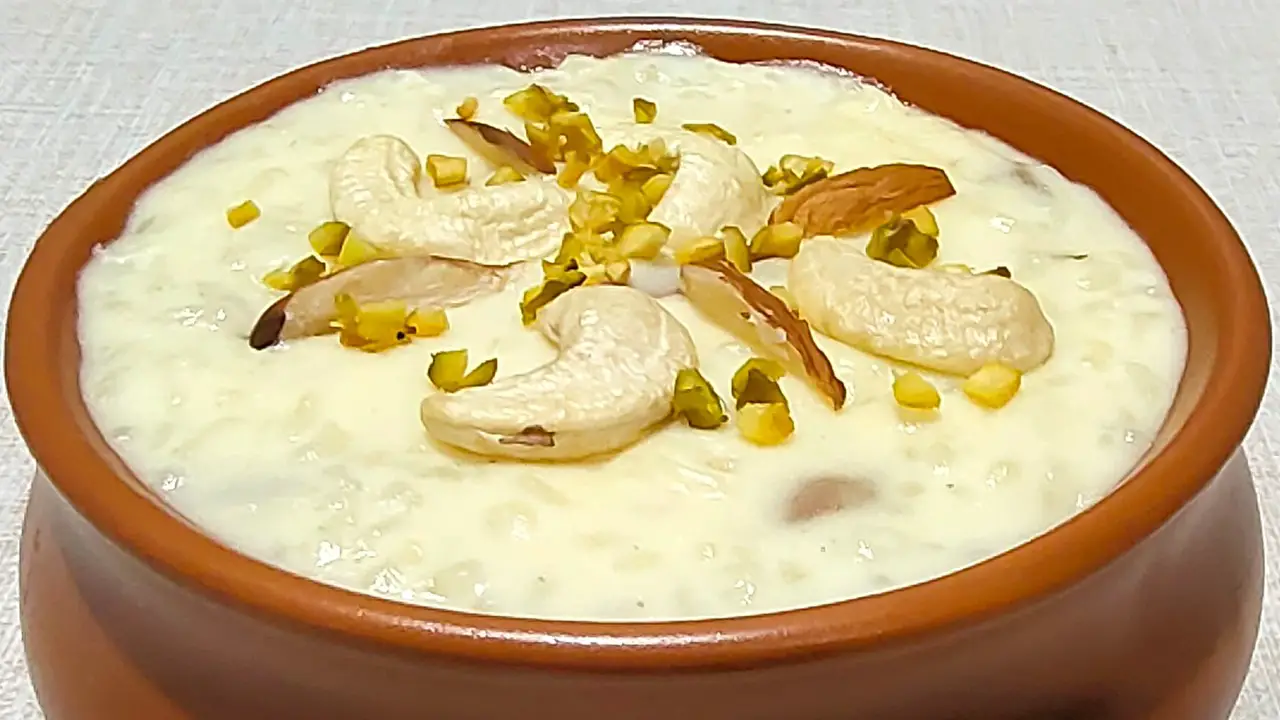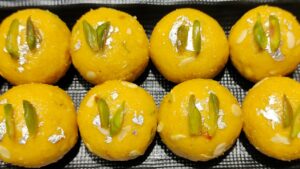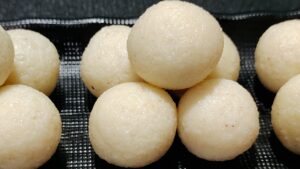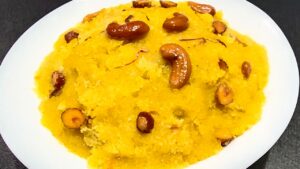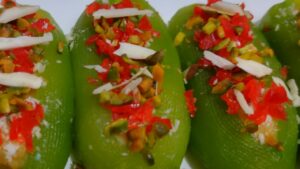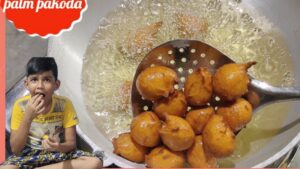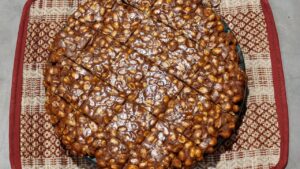Rice Kheer, also known as Rice Pudding or Chaler Payesh, is a traditional Indian dessert made with rice, milk, sugar, and aromatic ingredients.
It is a creamy and sweet dish that is popular across India and enjoyed during festivals, special occasions, and religious ceremonies.
The process of making Rice Kheer involves slow-cooking rice in milk until it reaches a thick and creamy consistency.
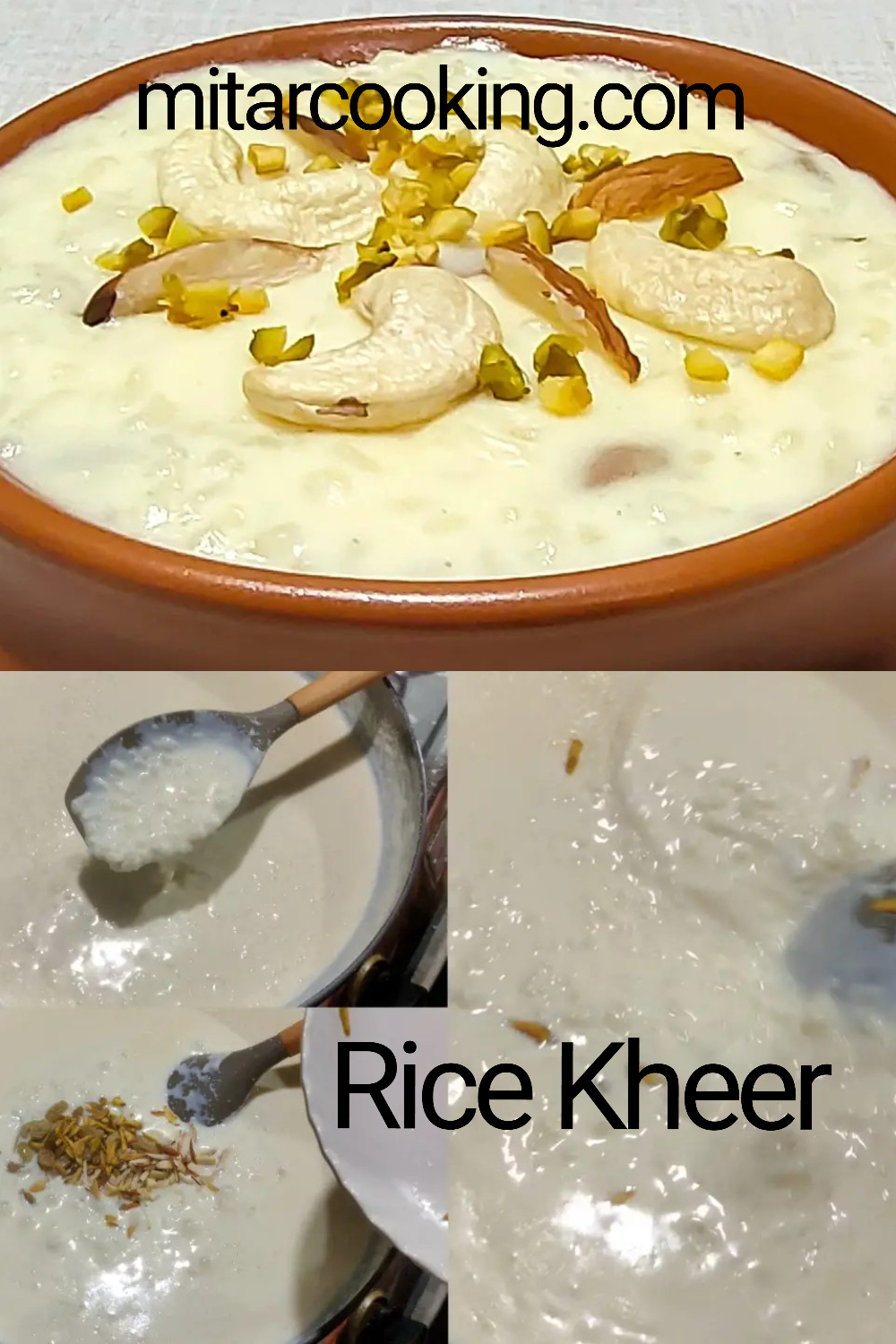
Key Takeaways:
- Rice Kheer, also known as Rice Pudding or Chaler Payesh, is a popular Indian dessert loved by people of all ages.
- It is a creamy and aromatic sweet dish made with rice, milk, sugar, and flavorful ingredients like cardamom, saffron, and nuts.
- Rice Kheer is often prepared during festivals, special occasions, and religious ceremonies in India and is enjoyed as a comforting dessert or a sweet ending to a meal.
- The process involves slow-cooking rice in milk until it reaches a thick and creamy consistency, with the rice absorbing the milk for a rich and velvety texture.
- Rice Kheer can be served warm or chilled, garnished with roasted nuts, and enjoyed with accompaniments like Poori, Gulab Jamun, or fresh fruits.
The Ingredients:

- Gobindobhog rice: 150 gms (soaked in water for 30 mins & strained)
- Cow milk: 2 liters (boiled)
- Sugar: 150 gms
- Ghee: 2 Tbsp
- Cardamom powder: ½ tbsp
- Salt: less than ½ tbsp
- Cashew nut: 4 tbsp (semi crushed)
- Almond nut: 2 tbsp (chopped)
- Pistachios: 2 tbsp (chopped)
- Raisins: 2 tbsp (pre-soaked in water)
- Amul powder milk: 5 tbsp
How to Cook Rice Kheer (Step by Step Images)?
1. Heat the wok and grease it with ghee using a brush. Add the milk and raise the flame to bring it to a boil.
(Pro tip: Greasing the bottom of the wok or pan with ghee or fortified butter prevents the milk from sticking while cooking.)
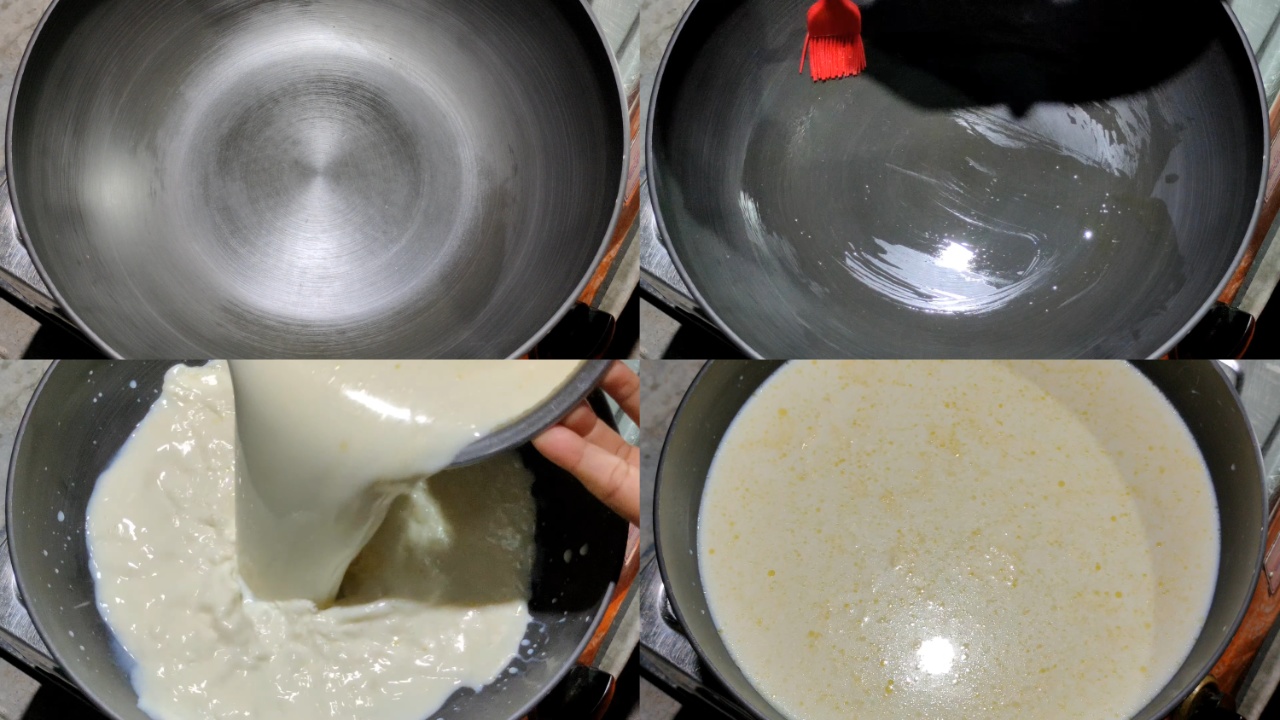
2. Add 1 tbsp of ghee to the rice and mix it well. Let it sit for 5 minutes.
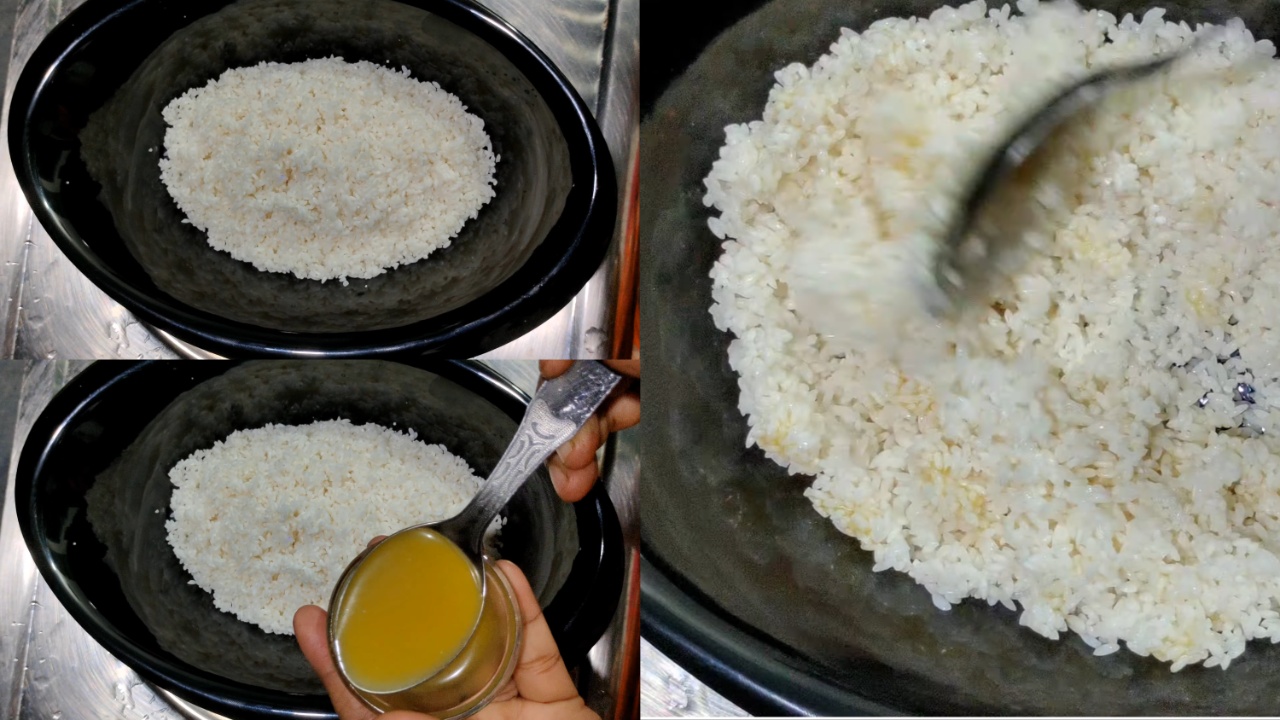
3. The milk should be simmering now. Take out a small amount of milk and keep it for mixing the powdered milk.
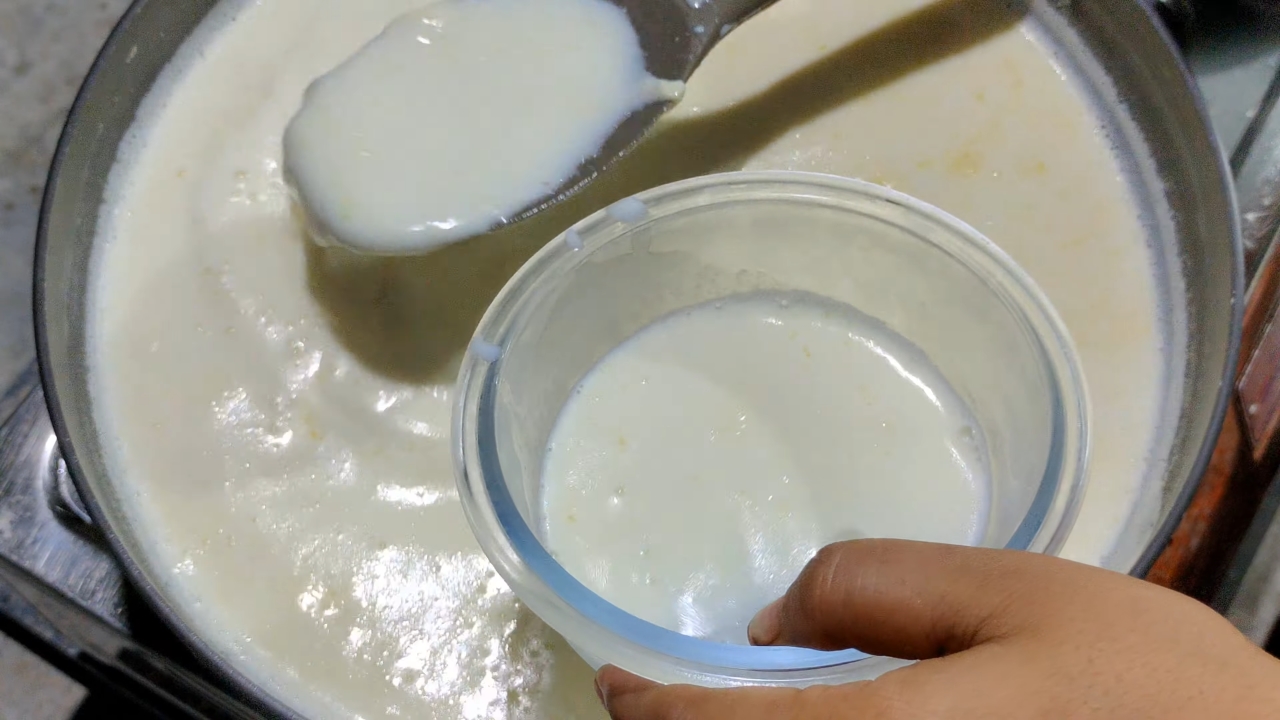
4. Next, add the rice to the simmering milk using a spatula and stir it thoroughly. Keep the gas flame on medium heat.
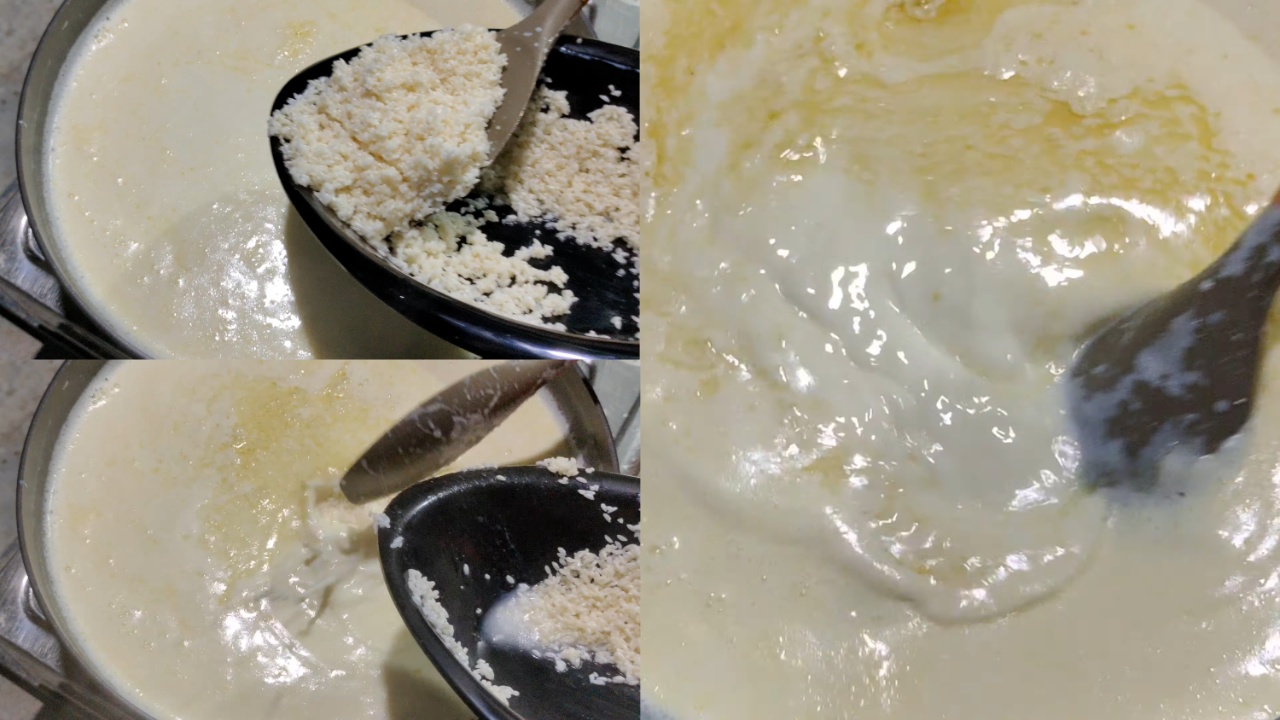
5. Remember to stir it frequently to prevent it from sticking to the bottom of the wok.
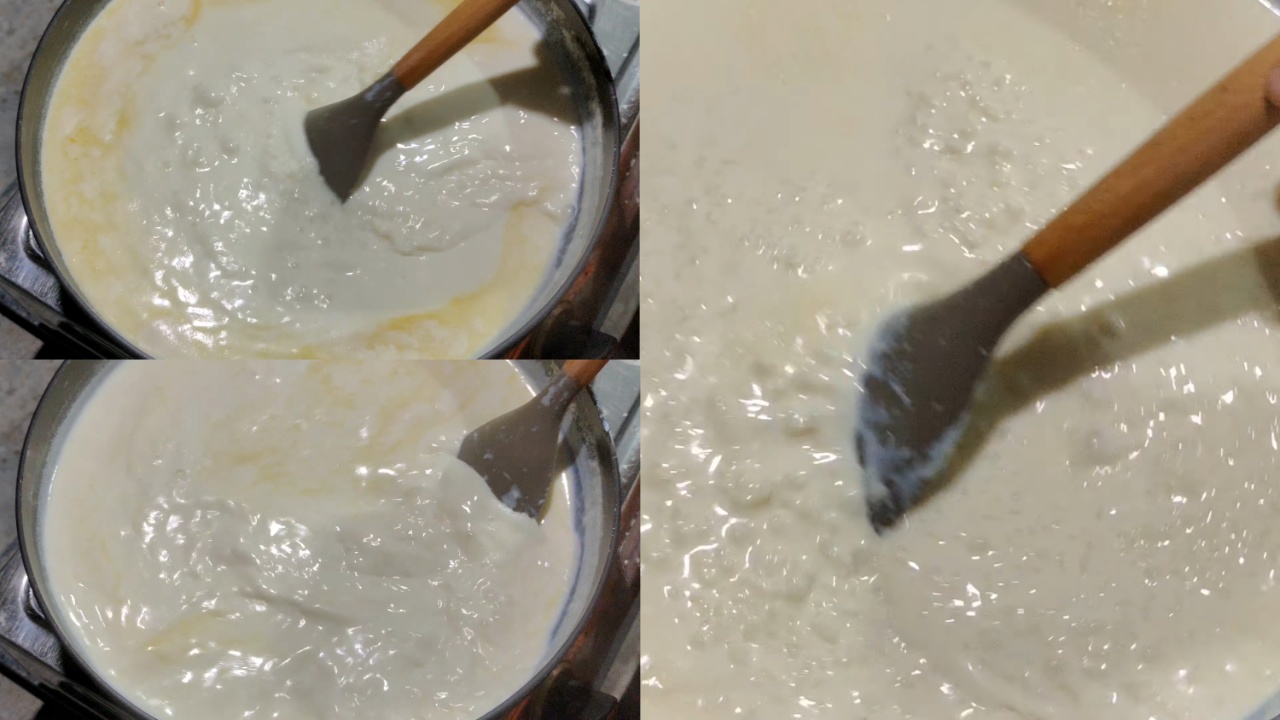
6. Once the rice is 70% boiled, add the nuts such as cashews, almonds, pistachios, and raisins. Stir everything together. After 2 minutes, add the sugar.
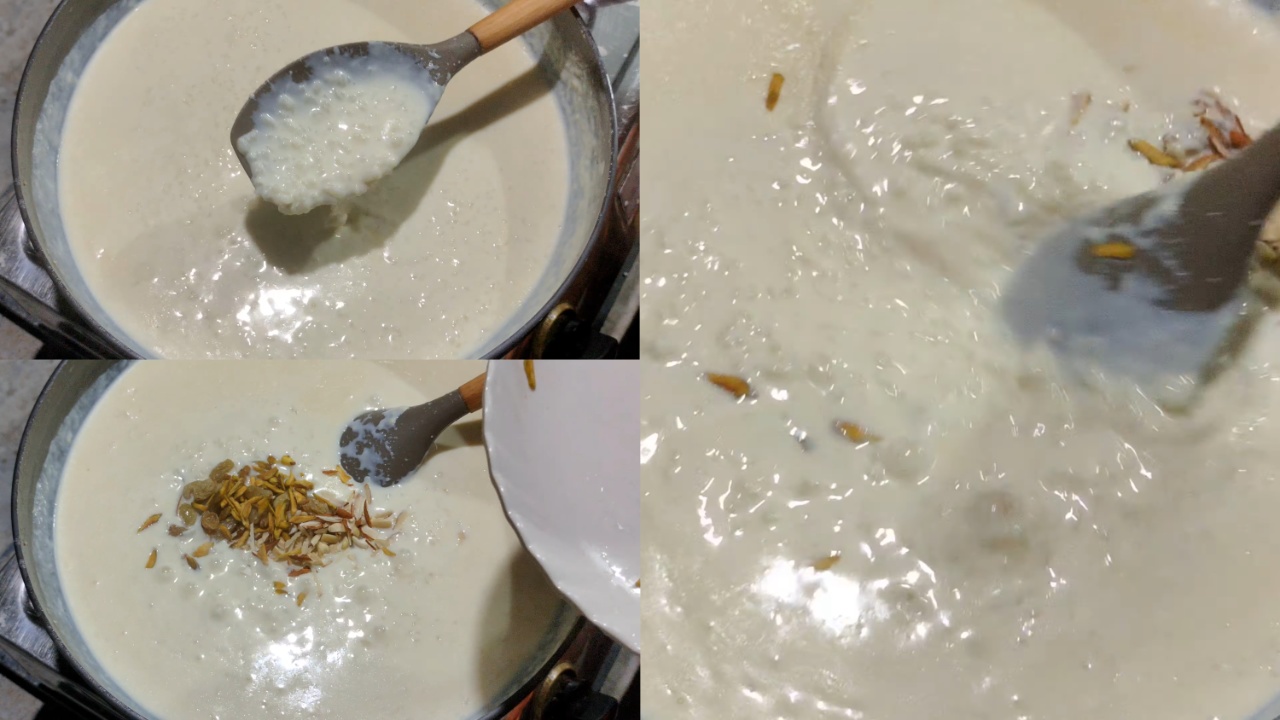
7. Optionally, you can add less than ½ tbsp of salt to enhance the taste.
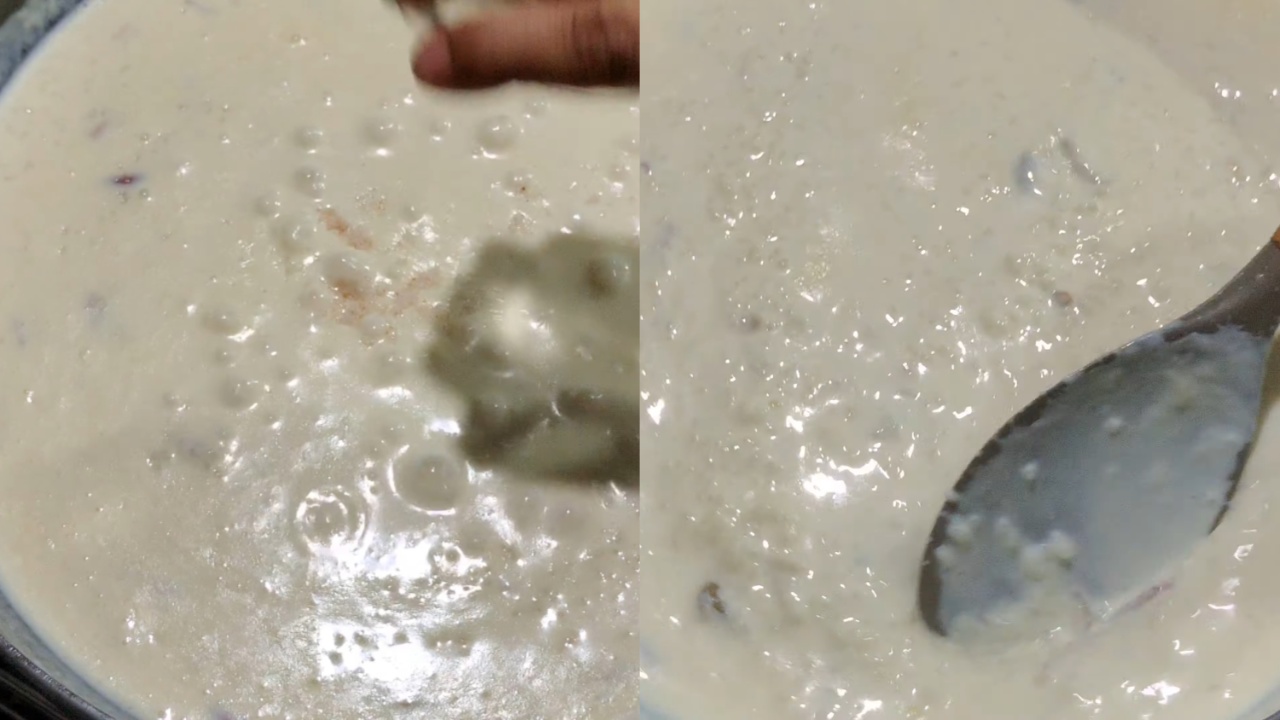
8. Now add 150 gms of sugar to the rice. The rice should be perfectly boiled. Mix the sugar nicely.
(Pro tip: You can adjust the amount of sugar according to your preference. Do not add sugar until the rice is fully boiled, as it will make it hard and prevent further boiling.)
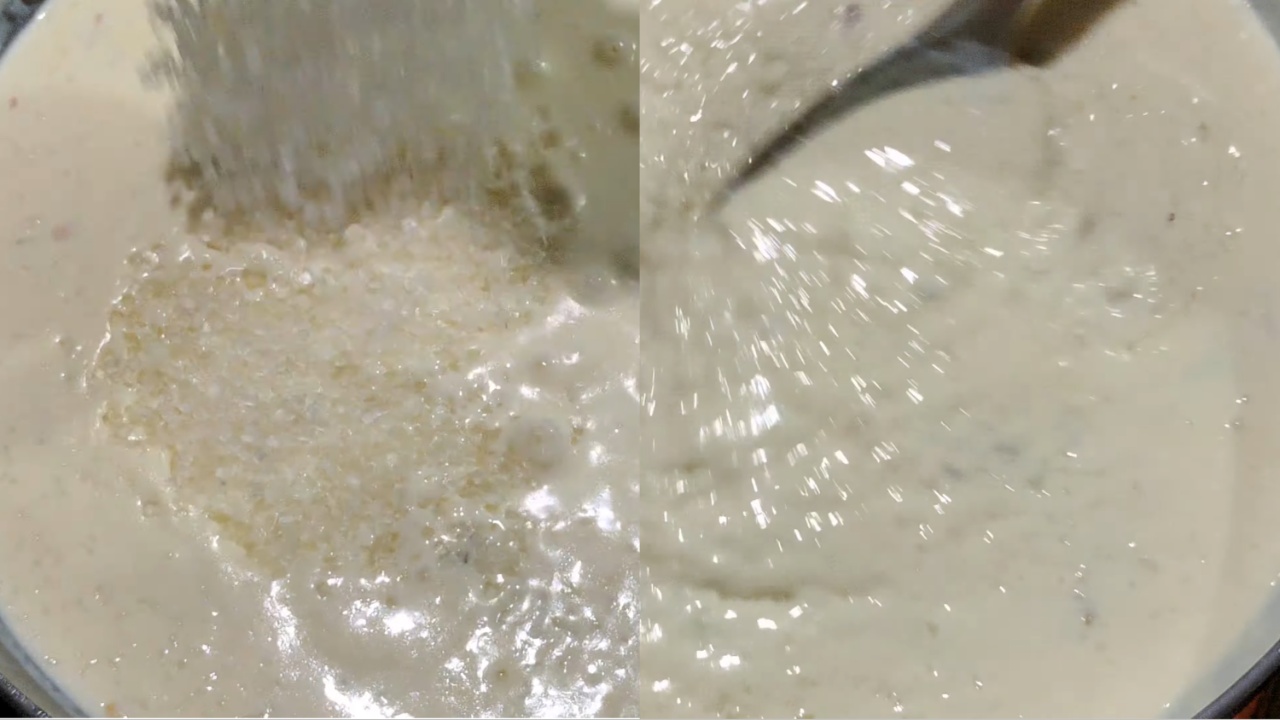
9. Add the cardamom powder.
(Pro tip: You can also add whole cardamom by crushing it.)
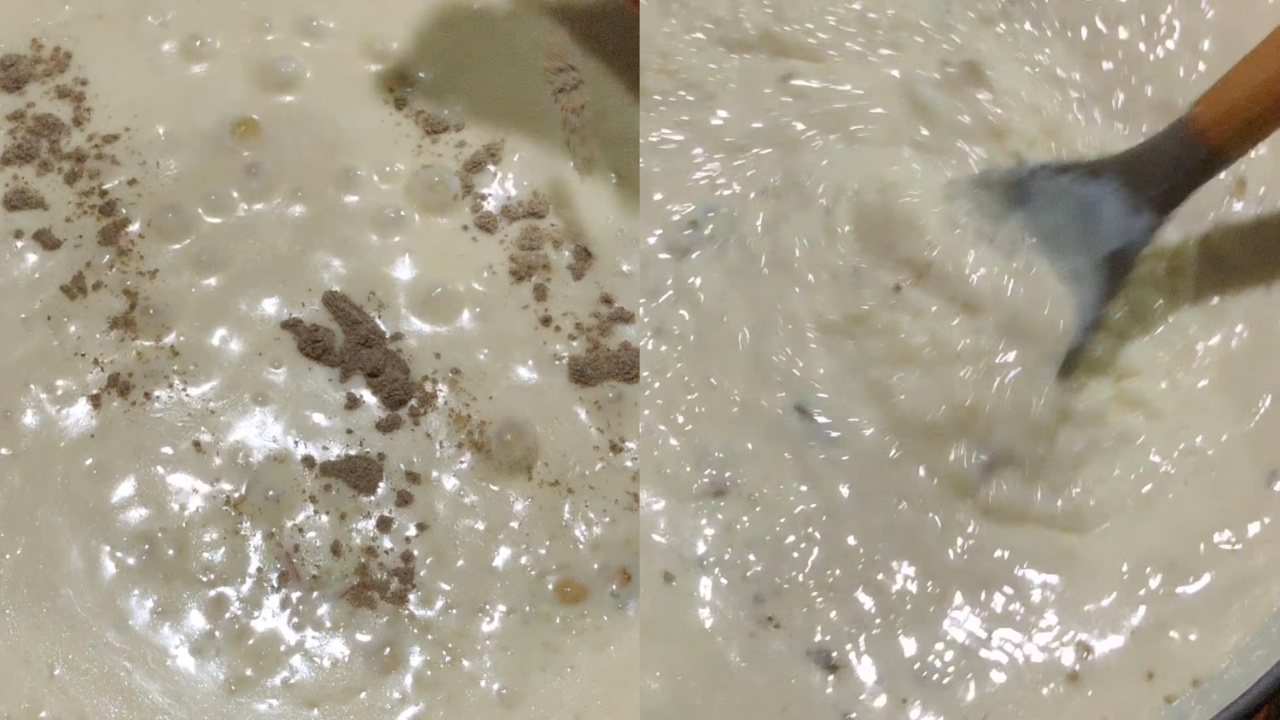
10. Finally, add the solution of pre-mixed Amul powder with cow milk just 1 or 2 mins before turning off the gas. This will enhance the smell and taste.
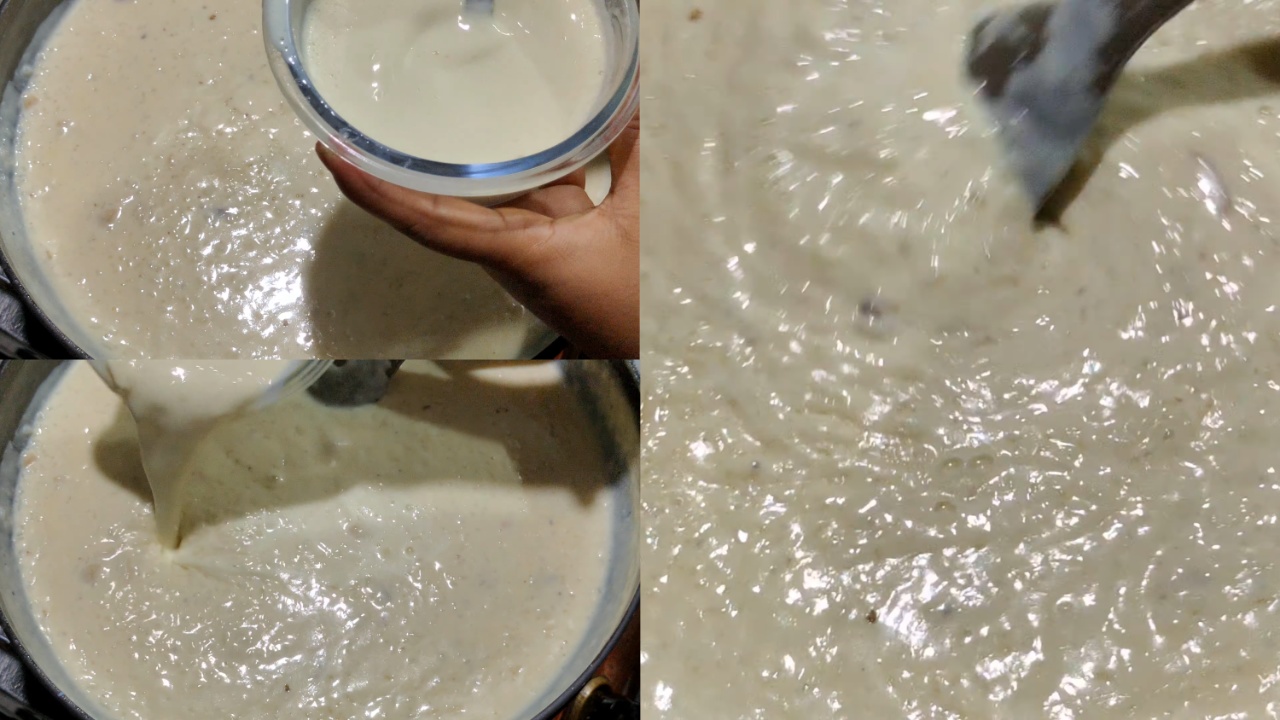
11. The rice kheer is now ready and it did not stick to the bottom.
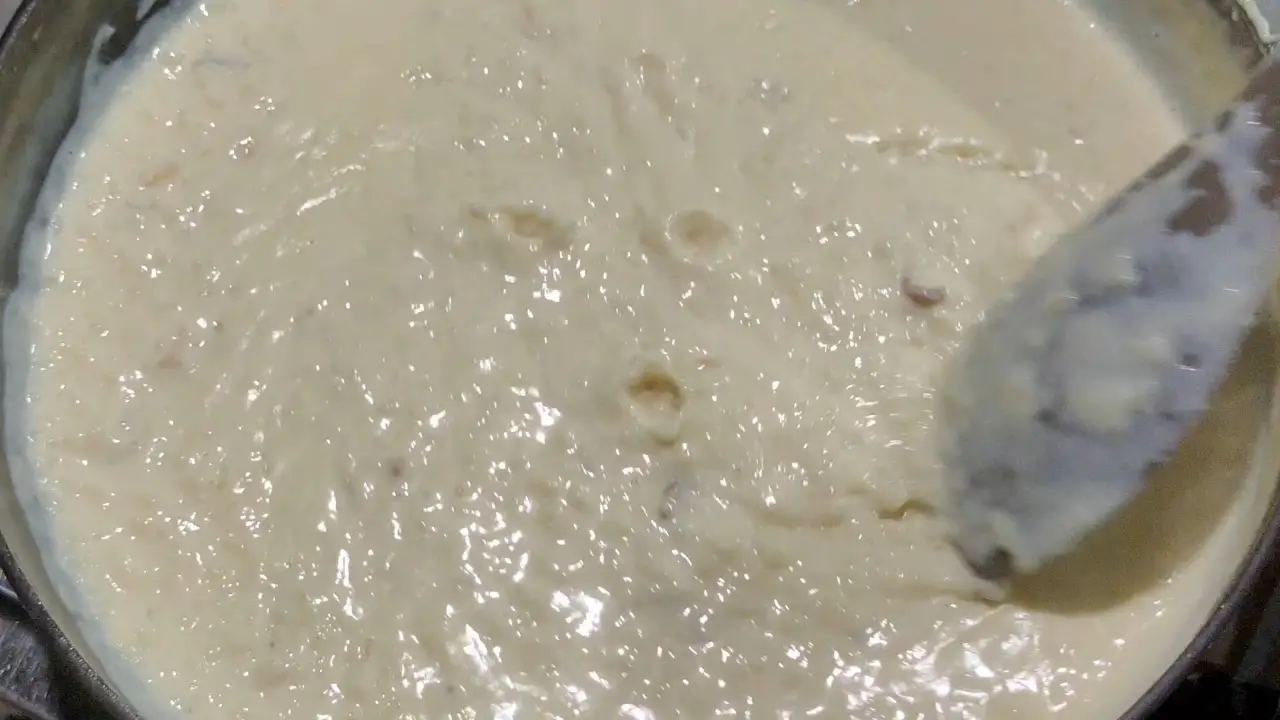
12. Transfer it in bowls, garnished with nuts and raisins and as sweet treat.
(Pro tip: You can also add saffron strands for additional garnishing.)
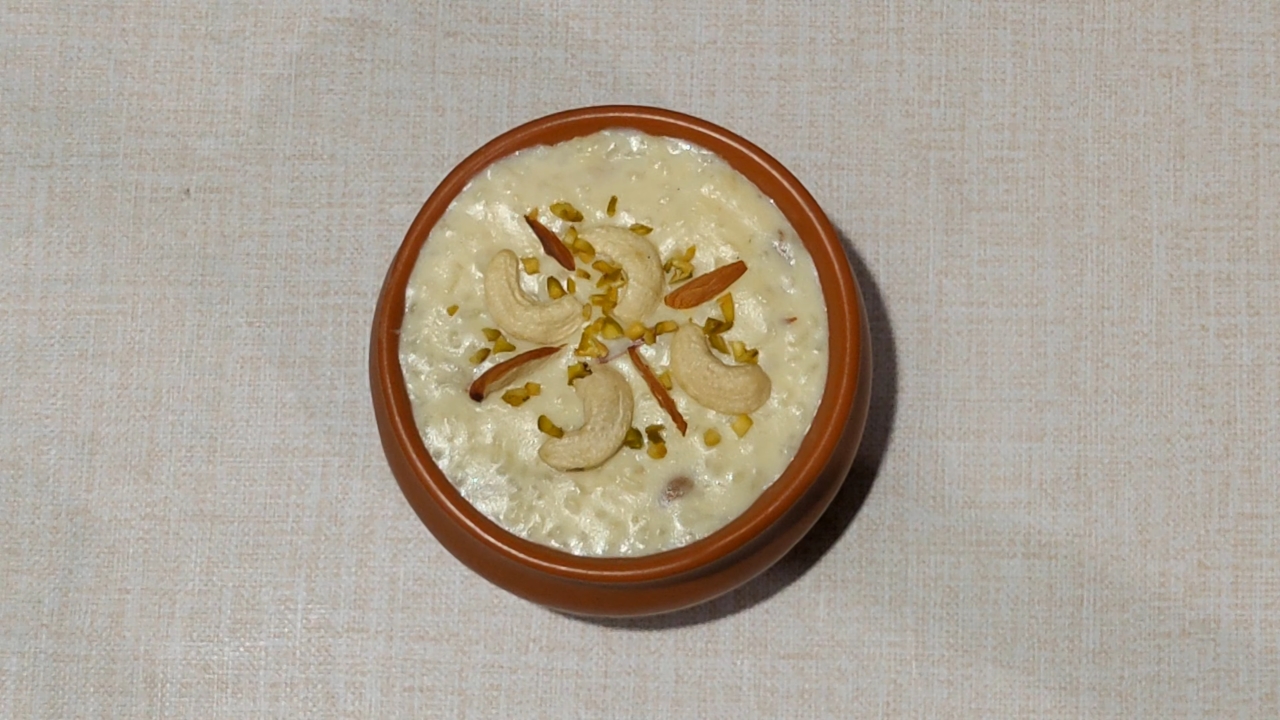
Recipe Card:
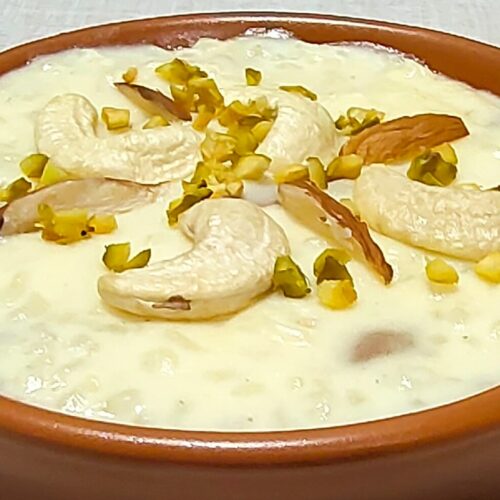
Rice Kheer (Chaler Payesh)
Ingredients
- 150 grams Gobindobhog rice (soaked in water for 30 mins & strained)
- 2 liters Cow milk (pre-boiled)
- 150 grams Sugar
- 2 tablespoons Ghee
- ½ tablespoons Cardamom powder
- 4 tablespoons Cashew nut (semi crushed)
- 2 tablespoons Almond nut (chopped)
- 2 tablespoons Pistachio (chopped)
- 2 tablespoons Raisin (pre-soaked in water)
- 5 tablespoons Amul powder milk
- Salt to taste
Instructions
- Heat the wok and grease it with ghee using a brush. Add the milk and raise the flame to bring it to a boil.(Pro tip: Greasing the bottom of the wok or pan with ghee or fortified butter prevents the milk from sticking while cooking.)
- Add 1 tbsp of ghee to the rice and mix it well. Let it sit for 5 minutes.
- The milk should be simmering now. Take out a small amount of milk and keep it for mixing the powdered milk.
- Next, add the rice to the simmering milk using a spatula and stir it thoroughly. Keep the gas flame on medium heat.
- Remember to stir it frequently to prevent it from sticking to the bottom of the wok.
- Once the rice is 70% boiled, add the nuts such as cashews, almonds, pistachios, and raisins. Stir everything together. After 2 minutes, add the sugar.
- Optionally, you can add less than ½ tbsp of salt to enhance the taste.
- Now add 150 gms of sugar to the rice. The rice should be perfectly boiled. Mix the sugar nicely.(Pro tip: You can adjust the amount of sugar according to your preference. Do not add sugar until the rice is fully boiled, as it will make it hard and prevent further boiling.)
- Add the cardamom powder.(Pro tip: You can also add whole cardamom by crushing it.)
- Finally, add the solution of pre-mixed Amul powder with cow milk just 1 or 2 mins before turning off the gas. This will enhance the smell and taste.
- The rice kheer is now ready and it did not stick to the bottom.
- Transfer it in bowls, garnished with nuts and raisins and as sweet treat.(Pro tip: You can also add saffron strands for additional garnishing.)
Video
Notes
- Use Gobindobhog rice to make rice kheer. These variant is just right to achieve the right creamy texture and consistency of the dessert. Long grains may not yield the desired consistency.
- Pre-soaking rice in water for about half an hour before cooking. This will help soften the rice and reduce the cooking time. It will also ensure even cooking where every grain will be tender.
- Slow cooking on low heat is the key to make perfect rice kheer. Stir the kheer occasionally. This will prevent the rice from sticking to the bottom of the pan and help absorb the milk perfectly. This will help the dessert develop a luscious consistency and achieve the right creamy and rich texture.
- Be careful about the sugar when you add to the kheer. Always start with a moderate amount of sugar, let it melt and mix properly, taste it, and then gradually add more of it if required. You can replace sugar with jaggery (unrefined cane sugar), condensed milk, or artificial sweeteners.
- Though rice kheer usually does not need any additional garnishing but there is no harm in making some flavorful additions such as cardamom powder, rose, water, saffron strands, or even some roasted nuts for additional crunchiness.

